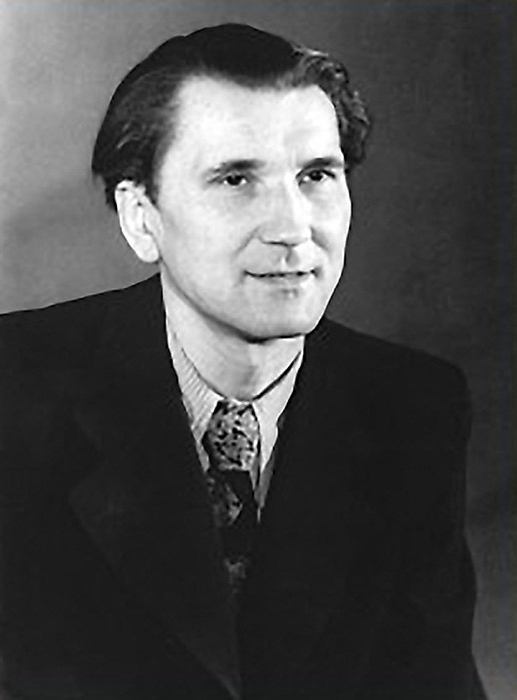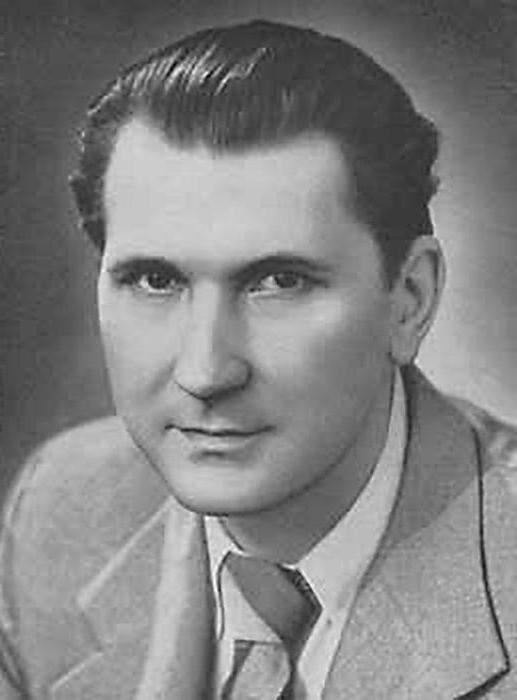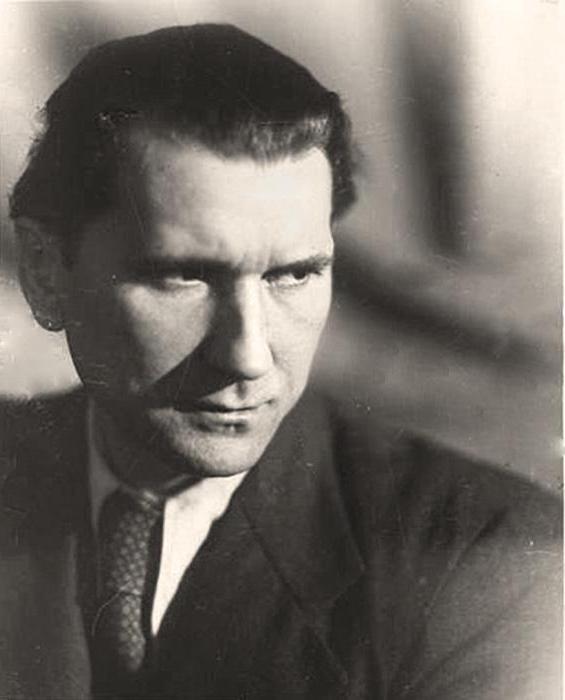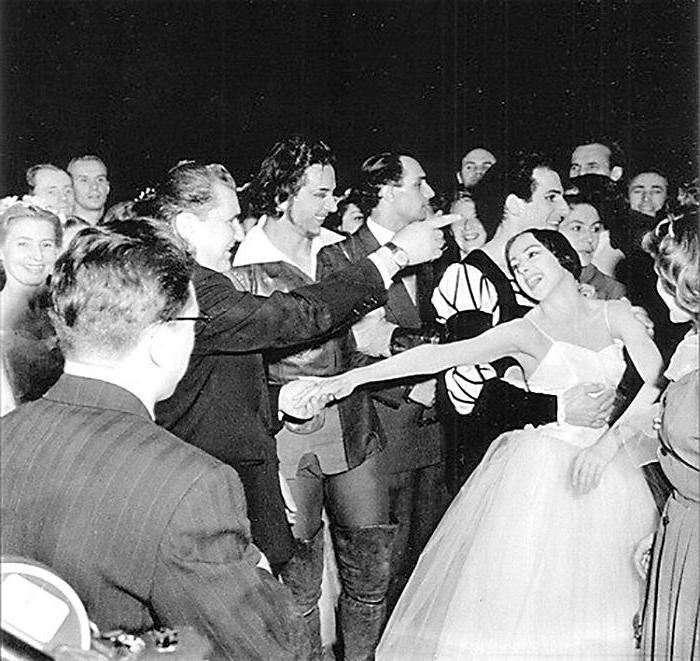A wonderful artist, teacher and choreographer Leonid Lavrovsky wrote bright pages in the history of modern dance art. His name is associated with the formation of ballet in the Soviet Union and the triumphal tour of Soviet ballet stars abroad. An outstanding choreographer, a talented organizer and a beautiful person - this is how he was remembered by contemporaries.
Choreographer Leonid Lavrovsky: biography, photo
There are people at the mention of whose name memory immediately causes associations with any phenomenon or event. These names are inextricably linked with high service to their cause. In the gallery of persons who brought world fame to Russian ballet, it is impossible to ignore the portrait of a talented and enthusiastic person - choreographer Leonid Mikhailovich Lavrovsky.
Childhood
Leonid Mikhailovich Ivanov (this is the real name of the choreographer) was born on June 5, 1905 in St. Petersburg. The family was not rich, working. However, the father of the future choreographer was very fond of music and once committed an unexpected act. He quit his job and joined the Mariinsky Theater Choir. It is not known how without this decisive act of the father the creative fate of the future great choreographer could have developed. But since that time, little Lenya began to spend a lot of time behind the theater backstage. He began to learn the world of the theater from the inside.

Theatrical art captivated a talented young man. He entered the Leningrad Choreographic College, which he graduated in 1922. During the study, the wonderful teacher Vladimir Ponomarev found out that the guy has the talent and artistry of a novice dancer. Gradually, his artistic vision of the profession began to take shape. At the same time, Ivanov decides to take a creative pseudonym. Apparently, his own surname seems too simple to him, and the artist Leonid Lavrovsky is already finishing the choreographic college.
At the beginning of the journey
After completing his studies at the technical school, L. Lavrovsky was enrolled in the staff of the ballet troupe of the Leningrad Opera and Ballet Theater as the first soloist. Ahead was the classical repertoire and time-tested performances, where he will perform roles in Giselle, Swan Lake, and Sleeping Beauty. The young artist works hard, but loves and has a great time after the performance. However, already from these years the artist developed a very good quality of character: even after a stormy night, he never allowed himself to be late to the theater or miss a rehearsal. At the same time, Leonid Lavrovsky marries for the first time. His chosen one was the ballerina Catherine Heidenreich.
Noisy and funny feasts among friends did not become an obstacle to further study and self-education. Leonid reads a lot, takes piano lessons and music history, goes to exhibitions. Gradually, a little-educated young man from a working-class family turns into an erudite, well-read man. Elegant appearance and innate intelligence complete the formation of the future great ballet master.

However, in the theater, everything went not too smoothly. Young and talented dancers were already breathing in the back. Lavrovsky began to think that he was being pinched, not allowed to dance. The slowly smoldering conflict with the artistic director of the ballet troupe A. Vaganova only worsened his moral condition. In 1936, unable to withstand the tension prevailing in the theater, L. Lavrovsky quit. However, the artist was not in the status of unemployed for long. Just a week later, he accepted the proposal to lead the ballet of the Leningrad Small Opera House. In this position, L. Lavrovsky worked until 1937.
First productions
Simultaneously with participation in ballet performances, Leonid Mikhailovich begins his production activities. At the Leningrad Choreographic School, he staged A Sad Waltz to the music of J. Sibelius (1927) and The Seasons (P. I. Tchaikovsky, 1928). “Schumanian” and “Symphonic Etudes” (1929) were staged to the music of R. Schumann. It cannot be said that the production of L. Lavrovsky has always been successful. A concert program in the style of M. Fokine (1932) failed and was recognized as decadent and indulging in bourgeois tastes.
Failures did not stop the director. New times dictated that art should be accessible and understandable to a wide audience of workers and peasants. For the Leningrad Choreographic School, Leonid Lavrovsky poses two ballets, Fadetta and Katerina. This time he hit the mark. Both performances were considered successful, and the young choreographer boldly takes on new productions based on the works of N. A. Rimsky-Korsakov, A. Adan, A. Rubinshtein and many others.
At the same time, another event occurs. Leonid Lavrovsky, whose personal life with E. Heidenreich did not work out, marries a second time. Elena Chikvaidze, who participated in the production of the ballet "Prisoner of the Caucasus" to the music of B. Asafiev, became his chosen one. In 1941, their son was born - Lavrovsky Mikhail Leonidovich, whose biography was also inextricably linked with the art of ballet.
Kirov Theater
Meanwhile, passion at the Mariinsky Theater did not subside. The autocratic and imperious nature of A. Vaganova brought the situation in the ballet troupe to the point of the highest passions. The leader was reproached for the lack of new performances in the repertoire, the clamp of young performers, authoritarianism in making important creative decisions, old mode and despotism. They also remembered the departure from the theater of L. Lavrovsky. It is difficult to say how fair these allegations were. But it all ended with the fact that the chair of the artistic director of the ballet was empty. December 31, 1937 Leonid Lavrovsky, choreographer and ballet dancer, was appointed to the post of head of the ballet of the Leningrad Opera and Ballet Theater. S. M. Kirov. He held this post until 1944.
S. Prokofiev, “Romeo and Juliet” (1940)
In 1940, L. Lavrovsky began work on the ballet “Romeo and Juliet” to the music of S. S. Prokofiev. The large-scale performance was not easy. By this time, there was no tradition in the world ballet of staging works by W. Shakespeare. His work was interpreted differently by the choreographers, therefore there were no established canons that the director could rely on in his work. But before L. Lavrovsky there was one more difficulty. Oddly enough, but this obstacle was the brilliant music of S. S. Prokofiev. Complex rhythmic canvas, unusual compositional techniques. A musical canvas woven from various themes that intertwined and created the finest lace of the author's perception of immortal tragedy. Initially, the artists simply could not understand the composer's plan.

L. Lavrovsky was patient and persistent. But the musical score also changed in order to make the performance brighter and sharper. Gradually, the troupe overcame musical resistance. The production of Romeo and Juliet was favorably received by the public and critics. The unusual music of S. Prokofiev was noted, rejoiced at the success of the choreographer L. Lavrovsky, praised the scenery. The undoubted triumph of this performance was Galina Ulanova. The ballet premiere in Moscow turned out to be brighter. The performance was recognized as the best ballet of our time. This largely predetermined the future life of the director. In 1944, L. Lavrovsky was appointed head of the ballet of the main stage of the Soviet Union.
Moscow, Bolshoi Theater
L. Lavrovsky understood that everything that he had done before this time was just a prelude to work in the main theater of the country. First of all, he began actively and talented to restore the classical ballet repertoire. On the occasion of the 100th anniversary of the ballet Giselle, L. Lavrovsky makes his own version of the play. The renewed Giselle with G. Ulanova was recognized as one of the best productions of this ballet and became a model for many generations of choreographers. Then new editions of the Raymond and Chopiniana ballets were created.

Another large-scale work of L. Lavrovsky is the reconstruction of Romeo and Juliet on the stage of the Bolshoi Theater. The production could not be mechanically transferred to a new stage. It has become larger and more significant. Emphasis shifted and conflicts intensified. Grandiose mass scenes and new scenery completed the transformation of the author’s concept of L. Lavrovsky. The new edition of the famous ballet was very successful. L. Lavrovsky received the Stalin Prize, and the performance for decades became the hallmark of the Bolshoi Theater.
20 years: success and failure
L. Lavrovsky believed that there can be no dance for the sake of the dance itself. The meaning of his work was the task of revealing new talents and promoting new names on the stage. The ballet of the Bolshoi Theater during its work gave a successful debut to many talented dancers and choreographers. The head himself is also not sitting idle. His next production is “Red Flower”. This is the new edition of the ballet "Red Poppy" composer R. Glier. The uncomplicated story of a Chinese dancer and Soviet sailors about the solidarity of people from different countries and different skin colors. The audience loved this performance, and the artists danced with pleasure in it. For this production L. Lavrovsky was awarded another Stalin Prize.
The ballet scene “Walpurgis Night” in “Faust” by S. Gounod is a small choreographic masterpiece inscribed in the canvas of a classical opera. All the leading ballet dancers sought to dance in this scene. Fans of classical dance went to the opera in order to see their idols in the real diamond of choreographic art.
However, the next big work of L. Lavrovsky failed. It was a “Tale of a Stone Flower” based on the works of P. Bazhov. It seemed that the music of S. Prokofiev, the talent of G. Ulanova and the experience of L. Lavrovsky was a powerful creative instrument that could create another grandiose ballet piece. In fact, everything turned out differently. In 1953, without completing work on the score, S. Prokofiev died. A year later, the production was nevertheless completed, but it turned out to be too naturalistic, devoid of ballet poetry and lightness. In January 1956, L. Lavrovsky was dismissed from the post of head of the Bolshoi ballet troupe.
Foreign tours
Today it is impossible to imagine that there was a time when the world did not know about Russian ballet. Great names, famous performances and productions of Soviet choreographers were for the Western public behind the same iron curtain as the entire Soviet Union. Breaking this abyss with the help of ballet art was a political affair. The first tour of ballet dancers in London (1956) was entrusted to lead L. Lavrovsky, who is on a creative pension. Four performances in the repertoire of Soviet artists, of which two were staged by L. Lavrovsky, made a stunning cultural impression on the sophisticated English public. The tour was triumphant. However, upon their completion, the choreographer again remained out of work.
Two years later, the situation repeated itself. Touring France - and again L. Lavrovsky becomes the head of the touring team. And after returning, he was again excommunicated from his beloved theater. Only in 1959 did L. Lavrovsky return to the Bolshoi Theater. Ahead was another difficult and responsible foreign trip - a tour in the USA.
Continuation of the dynasty
In 1961, another Lavrovsky was accepted into the troupe of the Bolshoi Theater - Mikhail Leonidovich. The wives of the famous choreographer, and by this time he was married for the third time, no longer gave him heirs. But the only son continued the work of his father and proudly carried the famous surname Lavrovsky on stage. Mikhail Leonidovich went through all the stages of a ballet dancer’s career. Father made no exceptions for him. Lavrovsky considered the brilliant ballet abilities of his son exclusively as an occasion for increased requirements and more stringent rules.
After one of the premieres, he wrote to his son several lines: “Everything is open for you, and everything depends on you!” So Lavrovsky advised his son. Mikhail Leonidovich the photo with this autograph of his father carried through his whole life.
Memory of the heart
After leaving the theater in July 1964, L. Lavrovsky began working at the Moscow Choreographic School. In 1965, Leonid Mikhailovich was awarded the honorary title of People's Artist of the USSR. He works hard and puts on concert numbers for students. Many of them have been preserved in the repertoire of the famous school to our time.
“Memory of the heart” - that’s the name of the last concert staged by the renowned choreographer. Leonid Lavrovsky died in Paris, where he came on tour with students of a choreographic school. This happened on November 27, 1967.